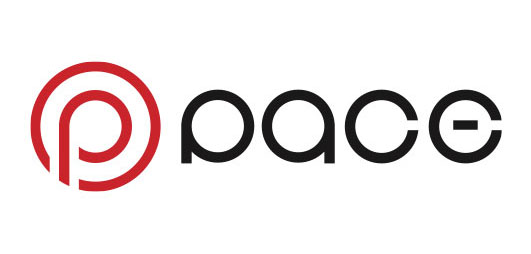
Though encyclopedia-sized books have been filled with SEO best practices, case studies, opinions and misconceptions, it often gets overwhelming to sift through the mountains of information to find simple SEO rules that actually work.
Making matters worse, search engine algorithm evolutions have turned once-successful SEO schemes into punishable offenses, yet many of these tactics continue to be touted as smart optimization.
To combat this misinformation in the seemingly ever-changing world of SEO, we’ve compiled a list of the top 10 SEO rules that have been, and probably will continue to be, the bedrock of any solid SEO strategy.
While this isn’t a definitive guide to everything SEO, it will outline the rules that you need to follow.
10 SEO Rules You Need To Know
- Use canonical URLs.
Though PaceAdv.com and www.PaceAdv.com appear to be the same, search engines view them as two different sites, therefore splitting your site traffic and creating duplicate content. This discrepancy happens since www is technically a subdomain of PaceAdv.com. Whether or not you choose the www or non-www version is irrelevant, but make sure you direct both URLs to just one of those versions. Luckily, this is probably taken care of automatically if your site uses a CMS like WordPress. - Keep your URLs clean and keyword rich.
At its best, a URL structure would look like this: domain.com/keyword-phrase. If yours is muddled with ‘index.php?page=articles’ and other clutter— replace it with your keyword phrase or page title, minus stop words like ‘a,’ ‘but,’ and ‘or.’ Also, use hyphens instead of underscores to separate words. Since search engines can’t read underscores, they’ll consolidate keyword_phrase into keywordphrase, therefore eliminating the benefits of a keyword in your URL. - Find what users are really searching for.
Don’t use what you think people search for, find what they really do. Through various paid tools—and even some free ones—you can find what phrases users actually type into their search engines, as well as how much competition there is for that phrase.
- Focus on one keyword phrase per page.
Though you should use similar words throughout the body copy to aid in readability and searchability, pick just one phrase to focus on. Trying to accomplish too much on one page will only dilute your efforts. It’s better to rank in the top five for one phrase, then to rank on the second page for 30. - Utilize this keyword phrase appropriately.
Make sure the keyword is used in the URL, page title, headline (use the H-1 tag), opening paragraph, sub-headlines (use H-2, H-3 etc.), and closing paragraph. It’s best if the phrase is towards the front of the headline and sub-headlines, but the most important part is that it sounds natural. - Optimize images.
Search engines cannot read images. The same applies for the visually impaired who use a screen reader to dictate information to them from your website. That’s why it’s important to optimize images by using the keyword phrase in the image title, alt attribute, and description. Keep in mind, the alt attribute is what’s displayed to screen readers, so make it descriptive of what the image is so that visually impaired users, and search engines, can get the most out of your site. - Use internal links.
While xml and html sitemaps are great ways to outline the pages on your site for a search engine, it’s not the only way to improve the crawling of search engine spiders. You need search engines to find the pages on your website in order for them to be indexed, so linking to your own pages is a natural way to help search engines. By placing links within your text to other pages, you not only help search engines navigate your site, but you provide value to users by enabling them to easily access more information pertinent to what they’re currently reading. - Build quality backlinks.
A search engine study found that over 40% of a website’s SEO success comes from building quality backlinks. While on-page SEO like we’ve already discussed acts as the necessary foundation of optimization, backlinks are what separates somewhat successful SEO from the search engine superstars. Probably the most important aspect of SEO, backlinks are links to your website from other websites. Quality backlinks, especially from sites that outrank you for related keyword phrases, are necessary to tell search engines that your site is a valued authority on that particular topic. Since backlinks have been one of the most abused methods by unethical SEOs, it’s more important than ever to ensure your backlinks are from legitimate sources and garnered through ethical methods. - Create quality content.
Though there are countless ways to gain backlinks, some less ethical than others, the most important way is through consistent quality content. By creating useful, informative and engaging blogs, e-books, videos and infographics, you not only provide useful information to users that would then become more inclined to be customers, but you’ve created a page on your site to be shared throughout social media and other websites. It’s the natural spreading of quality content that leads to the most high-quality backlinks. Incidentally, linking back to other informative, relevant websites within your post can provide helpful information to users and help your ranking in search engines. Yes, more words generally garner better rankings, but creating longer posts should never take precedent over creating quality posts. An engaging, informative, easy-to-read blog post of 300 words is more beneficial than one that is boring, drawn-out and containing 3,000 words.
It’s the natural spreading of quality content that leads to the most high-quality backlinks. Incidentally, linking back to other informative, relevant websites within your post can provide helpful information to users and help your ranking in search engines. Yes, more words generally garner better rankings, but creating longer posts should never take precedent over creating quality posts. An engaging, informative, easy-to-read blog post of 300 words is more beneficial than one that is boring, drawn-out and containing 3,000 words. - Keep the endgame in mind.
Always consider where search engines are heading, not where they are. The goal of the leading search engines are to provide the highest quality, most relevant content. As search engines get closer to this goal, technical SEO will become much less relevant, with the creation of useful content and user-friendly design becoming the key to dominating search engines. So when in doubt, do what’s best for the user, not for the search engines. That way, no matter what Google algorithm changes come down the line, you should be able to avoid the wrath and lost pagerank that many sites suffer.
Now it’s time to put these SEO rules to use, but that doesn’t mean you have to go at it alone. Contact us today to learn how we can help you with your SEO efforts.
 As a Copywriter and SEO Manager at Pace, George Aslanian helps the agency’s clients utilize relevant content to engage their audience, drive sales, and improve search engine rankings. George is a Google Certified marketer and an award-winning digital copywriter with vast experience in web development, on-page optimization and user experience design.
As a Copywriter and SEO Manager at Pace, George Aslanian helps the agency’s clients utilize relevant content to engage their audience, drive sales, and improve search engine rankings. George is a Google Certified marketer and an award-winning digital copywriter with vast experience in web development, on-page optimization and user experience design.

